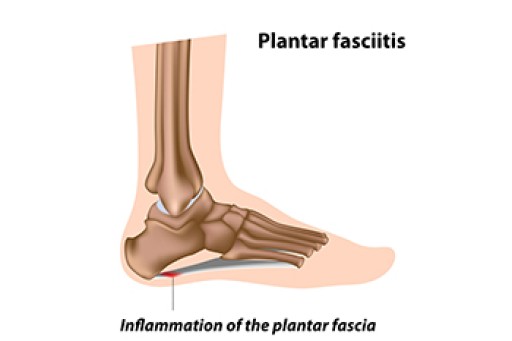
Plantar fasciitis is an extremely common foot affliction that affects a wide variety of different individuals of different backgrounds. Plantar fasciitis is the inflammation of the plantar fascia, the tissue that runs through the arch of the foot. The plantar fascia can become swollen or inflamed when it is strained and overused. There are several risk factors of plantar fasciitis to be aware of that could increase the probability of developing this condition. For example, consistently wearing ill-fitting shoes, or footwear that offers little or no arch support, can increase your risk of plantar fasciitis. Additionally, if you are overweight or have gained a significant amount of weight in a short amount of time, this extra weight that you are putting on your feet could make the development of plantar fasciitis more likely. Lastly, running substantially long distances, particularly on uneven surfaces, can make one more susceptible to plantar fasciitis. Contact a podiatrist today for an appointment if you think that you have plantar fasciitis.
Plantar fasciitis can be very painful and inconvenient. If you are experiencing heel pain or symptoms of plantar fasciitis, contact Terri Quebedeaux, DPM from Agave Podiatry . Our doctor can provide the care you need to keep you pain-free and on your feet.
What Is Plantar Fasciitis?
Plantar fasciitis is the inflammation of the thick band of tissue that runs along the bottom of your foot, known as the plantar fascia, and causes mild to severe heel pain.
What Causes Plantar Fasciitis?
- Excessive running
- Non-supportive shoes
- Overpronation
- Repeated stretching and tearing of the plantar fascia
How Can It Be Treated?
- Conservative measures – anti-inflammatories, ice packs, stretching exercises, physical therapy, orthotic devices
- Shockwave therapy – sound waves are sent to the affected area to facilitate healing and are usually used for chronic cases of plantar fasciitis
- Surgery – usually only used as a last resort when all else fails. The plantar fascia can be surgically detached from the heel
While very treatable, plantar fasciitis is definitely not something that should be ignored. Especially in severe cases, speaking to your doctor right away is highly recommended to avoid complications and severe heel pain. Your podiatrist can work with you to provide the appropriate treatment options tailored to your condition.
If you have any questions please feel free to contact our offices located in Seguin, LaVernia, Gonzales, and Lockhart, TX . We offer the newest diagnostic and treatment technologies for all your foot and ankle needs.










